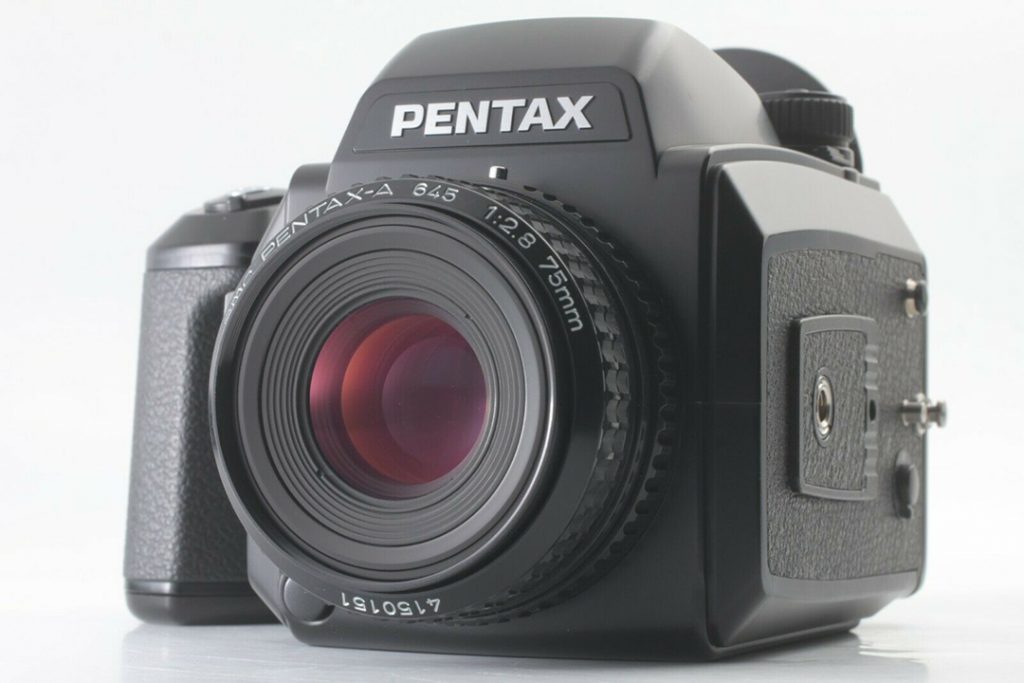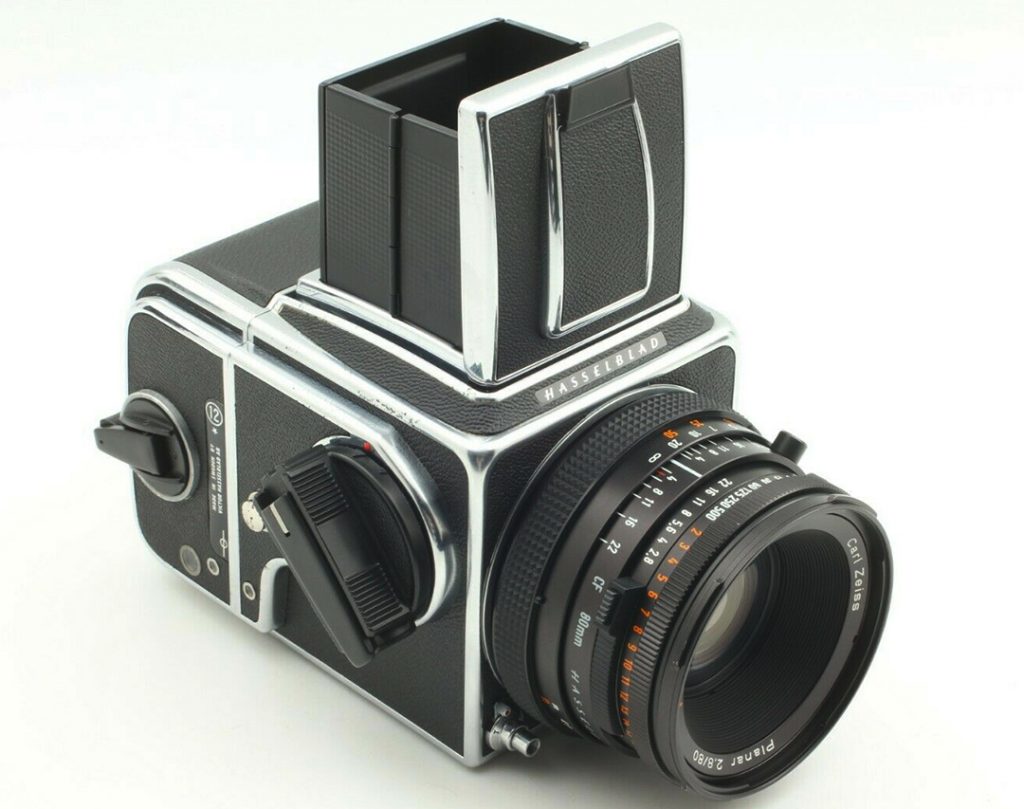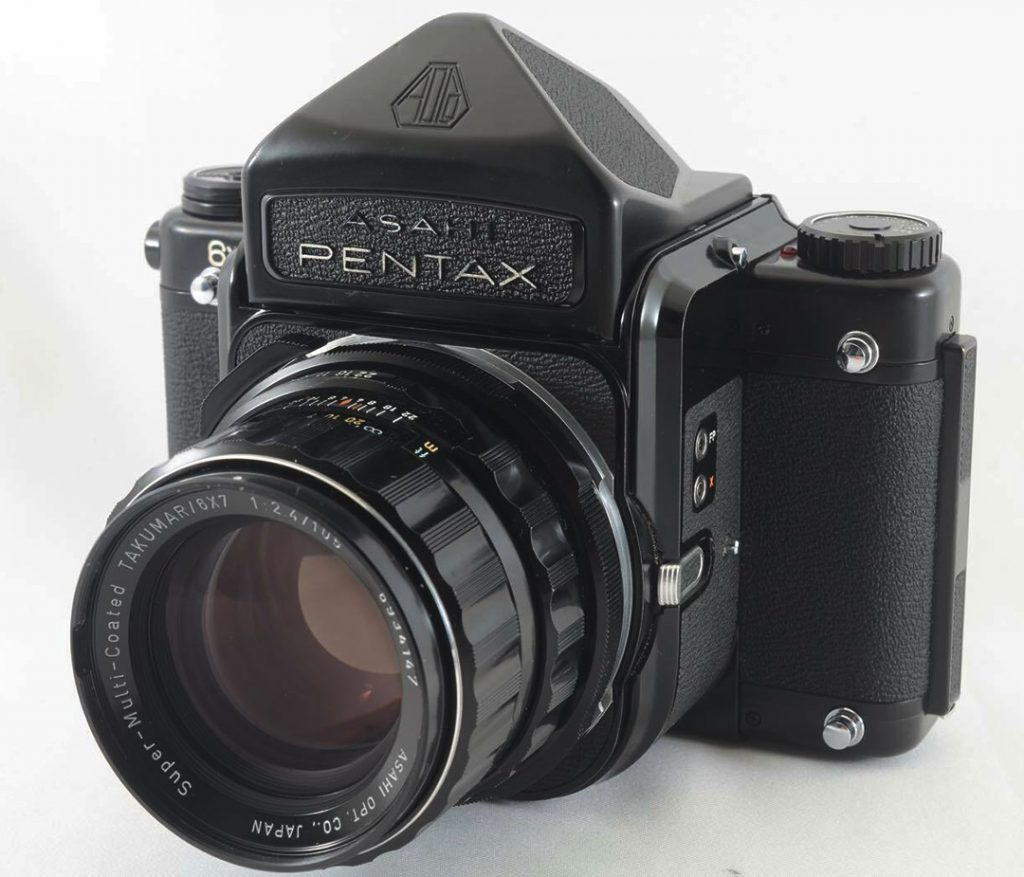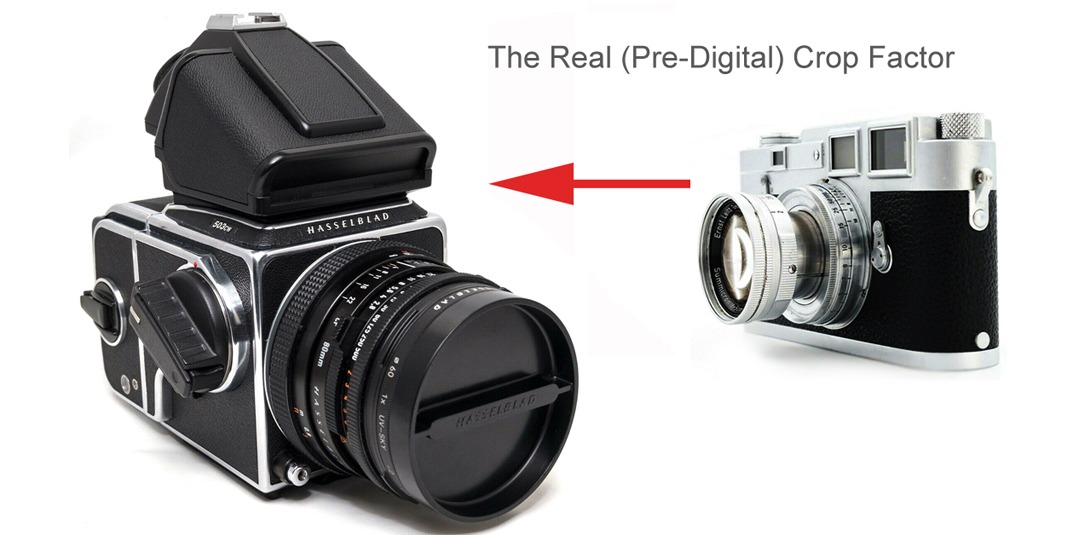Medium Format Lens Crop Factors
People immersed in digital photography have been dealing with crop factors for years. Less so with the advent of “full frame” sensors. But, as with those crop sensor “equivalencies”, you’ll run into the same re-thinking of focal lengths in reference to film size. If you’re shooting a large format camera, (4×5), 150mm will be your “normal” lens. There is something called a crop factor. Basically, this is a number that will translate that medium format lens to what a 35mm camera lens would be. For example, a 6×6 camera has a crop factor of .55. So, if you multiply an 80mm lens by .55, you’ll get 44mm. That would be the lens you would use on a 35mm camera for an exact match. (if there were such a lens) But getting an exact match is not really necessary. Especially as the lens gets longer. Only with very wide angle lenses would you notice much of a difference with a few mm. Hence, a Hasselblad, Rollei, etc., 6×6 80mm lens is “about” a 50mm on a 35mm camera.
Crop factors are based on the diagonal measurement of the negative. What would put a monkey wrench into these numbers is that some of these aspect ratios are a little weird. So, please don’t write me to say the equivalent lens is really 42.098. I don’t care, and neither do most people. In fact, a 35mm camera lens called “50mm” could actually be 52.5mm or even 48mm if measured precisely. I know most people think they are exactly as marked, but that would rarely be the case. So, this is just to provide a reasonably accurate measurement in order to identify “equivalent focal lengths” to your full frame 35mm camera lenses that you know by heart. A cheat sheet of sorts. 😁 And, yes, I’m aware I “missed” some focal lengths. Usually because they are not very popular. Like it would be kind of stupid to include every lens,….like Nikon’s Auto 43-86mm f/3.5 AI. First, because almost no one uses it. Second, because it’s a dumb focal length. Third because it’s a ‘zoom’. And probably most importantly,…it’s a piece of crap. So just use the crop factors if your focal length is not listed.


645 Crop Factor = 0.62
645 Lens | 35mm Equivalent |
45mm | 28mm |
55mm | 34mm |
60mm | 37mm |
55-110mm zoom | 34-68mm |
80mm | 50mm |
80-160mm | 50-100mm |
100mm | 62mm |
120mm | 75mm |
150mm | 93mm |
200mm | 124mm |

6 x 6 Crop Factor = 0.55
6 x 6 Lens | 35mm Equivalent |
30mm | 17mm |
40mm | 22mm |
50mm | 28mm |
60mm | 33mm |
65mm | 36mm |
75mm | 41mm |
80mm | 44mm |
120mm | 66mm |
150mm | 83mm |
180mm | 99mm |
200mm | 110mm |

6 x 7 Crop Factor = 0.5
6 x 7 Lens | 35mm Equivalent |
45mm | 23mm |
50mm | 25mm |
65mm | 33mm |
90mm | 45mm |
105mm | 53mm |
127mm | 64mm |
165mm | 83mm |
180mm | 90mm |
200mm | 100mm |
250mm | 125mm |
360mm | 180mm |

6 x 8 Crop Factor = 0.45
6 x 8 Lens | 35mm Equivalent |
65mm | 30mm |
90mm | 40mm |
100mm | 45mm |
125mm | 56mm |
135mm | 60mm |
150mm | 68mm |
180mm | 81mm |
190mm | 85mm |
210mm | 95mm |

6 x 9 Crop Factor = 0.43
6 x 9 Lens | 35mm Equivalent |
65mm | 28mm |
90mm | 39mm |
100mm | 43mm |
105mm | 45mm |
150mm | 65mm |
Depending on what you’re trying to achieve,….size matters.
😎


I enjoyed this write up. Everything you need with no additives. Thanks for the information. All the best.
Thanks, Luis. 😊
Well, of course 50mm is not actually “normal” for 35mm, it’s a little long. “Normal” for 35mm is closer to 40mm, though you don’t see many 40mm and 45mm lenses these days. So your “factors” are all a bit high.
80mm is “normal” for 6×6, so it is not actually “about” a 50mm on 35mm — a 92mm lens on a 6×6 camera would be “about” a 50mm on a 35mm camera. Etc.
Nunya,
I’m glad you put the word normal in quotes. Because, on 35mm film, 40mm to 60mm is considered “normal” by every lens manufacturer. The word “normal” is an arbitrary term. Read above; “So, please don’t write me to say the equivalent lens is really 42.098. I don’t care, and neither do most people.” Or, in other words, how many angels can you fit on the head of a pin? Since neither you, nor anyone else, can view a print/image and accurately discern between FOV of 45mm or 50mm,….it’s a moot point that serves no practical value for 99.9% of all imaging done.
Another commenter referring to a 6×7 Mamiya, ( https://www.anatomyfilms.com/mamiya-rz67/ ), wanted to argue that 90mm is “normal”,…not 110mm. Fact is, they’re both “normal”. From Mamiya,….”The 110mm f/2.8 is an excellent, all purpose normal lens.” IOW, “factors” are neither high nor low. They are in the acceptable range of a meaningless monikor. (“normal”)
Federico
Brilliant. Thanks for this conversion article. Bookmarked and will no doubt return to it again in the future. Saves me doing the math and easy to read. Cheers, David
Regardless of all the nitpicking comments, this was exactly what I was looking for. I have collected a range of antique cameras with wide range of film formats from 4×6 inch to 4x4cm and even smaller. Trying to understand the different focal lengths is important to me and this article helped a lot.
Pretty handy article – clear and concise. Don’t think I’m alone in finding the ‘nit pickery’ that some need to indulge vaguely amusing!
Thanks, Ian. 😁
Seems like some people didn’t read the article where you precisely address the measurements of lenses and their equivalents.
Either that or they are the sort of Galahs at meetings who have to say something, anything, just to be heard.
I am sure I speak for everyone who appreciates a clearly written article that gives the information they need when I say bloody good job mate.
Thanks Neville. 😁 Hope it can be helpful to everyone.
Cheers
Its sad that some people just want to create negative energy, instead of just saying thanks. If you can’t say something nice to don’t say anything. Trying to contradict someone for sharing knowledge is just tacky. AF. Thank You! it helped me
👍😊
As ‘normal’ eyesight conforms to a ‘normal’ curve then the FOV of the eye varies. So 42 to 55 or whatever is absolutely correct and conforms to nature. What people really want to know is which lens gives the same FOV, or WOV as their favourite 35mm or medium format. Short answer : trial and error. 2 lenses on same camera will answer this but consider ratio of viewfinder as well perhaps(not actually needed ;-)…).
Thats why no one cares. It’s impossible to be exact, differs between lenses and too bloody difficult. The only way is FOV or WOV of two lenses on same camera. Angle is irrelevant unless you are a bit anal about these things. Trial and error.
Hi Tim,
Sure. Trial and error. Since aspect ratios are not even the same between 35mm and “most” medium format,…of course, trial and error and your particular vision is all that matters. This is just a rough guide to get in the focal length neighborhood. However, the longer the lens, the less a few mm is going to matter. So, whether you prefer the wide angle vision of a Jeanloup Sieff, or the long lens view of a Hans Feurer, that’s in your head and your head alone.
Cheers
Ah! The Fujifilm GSW690III — really really really loved that camera. That lens is incredible. It felt like a handy large format, but with roll film.
This is a handy article to refer back to, for medium format — is there one for large format?
Cheers 🍻
Hi Philip,
Good idea. Probably add 4×5 and 8×10. But, there’re certainly other sizes of large format. Let’s see what others say about “weird” large format sizes.
Thanks for the idea.
AF
you’re right about normal in lens. I actually have a 40 , 45 and 50mm for 35mm cameras. the slight difference is on the negative and actual print, especially if you’re shooting a horizontal landscape or building. But again very slight.
Amazing information thank you
👍
I like your reply to “Nunya.” That person was getting far to pedantic to still be arguing in good faith. You are correct about the delineation of a “normal lens” and I think your charts are pretty functionally accurate, all things considered.
Hi Nick,
Yeah, it’s just a simplified guide to be helpful. As I’ve said before,…what is “normal” anyway? 😎
Take care
AF